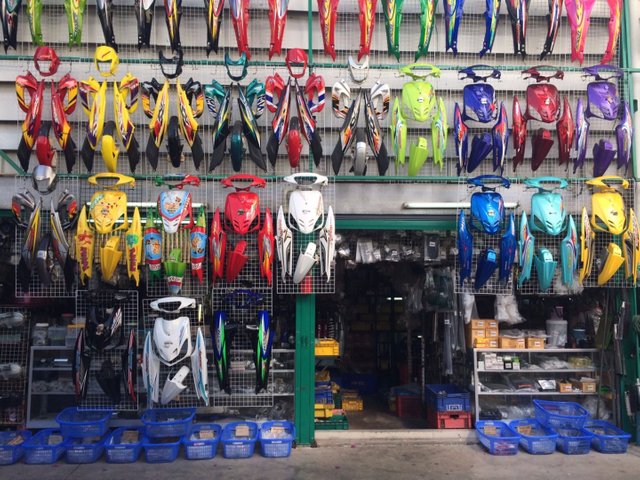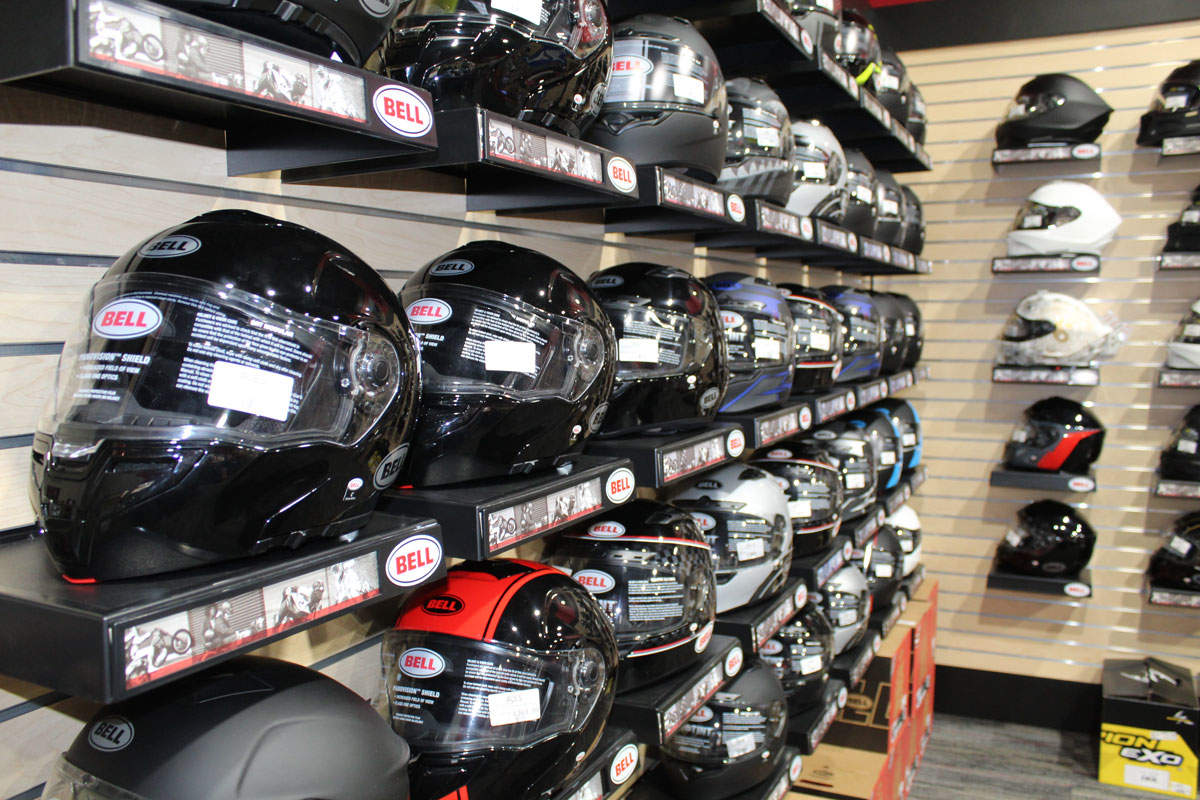Your Best Motorbike Shop for Quality Parts and Accessories
Your Best Motorbike Shop for Quality Parts and Accessories
Blog Article
Comprehending the Important Parts of a Motorbike: A Comprehensive Guide for Enthusiasts
For motorcycle lovers looking to boost their riding experience and ensure their bikes run smoothly, understanding the important parts of a motorcycle is paramount. Each element, from the engine's elaborate functions to the important duty of the braking systems, not just influences performance but also safety and security and comfort.
Engine Elements

The camshaft plays a crucial function in controlling the timing of the engine's shutoffs, ensuring the precise opening and closing required for efficient fuel and air intake, along with exhaust expulsion. This timing is essential to maintaining optimal engine performance and efficiency. Furthermore, the carburetor or fuel injection system, depending upon the bike design, is liable for blending air with fuel in the proper proportion for combustion.
The cooling system, either air or liquid-based, works to keep the engine's temperature within operational limitations, protecting against getting too hot and ensuring long life - motocross gear nz. Each part, meticulously made and incorporated, adds to the smooth procedure of the engine, defining the motorbike's power output and overall performance
Transmission System
Integral to the motorcycle's functionality, the transmission system guarantees reliable power transfer from the engine to the wheels. This system comprises a number of vital components, including the clutch, gearbox, and final drive, each playing an essential function in translating the engine's power right into activity. The clutch, usually run by a hand bar, offers to engage and disengage the engine from the transmission, permitting smooth equipment adjustments and controlled acceleration.
The gearbox, commonly referred to as the transmission correct, has a collection of gears that bikers can manually shift through to change the bike's speed and torque result. These equipments are set up in a sequence that makes it possible for the motorbike to speed up smoothly and preserve optimum engine efficiency throughout various rates. Many motorbikes make use of a sequential transmission, calling for the motorcyclist to change gears in an established order.
Braking Mechanisms
While understanding the transmission system is crucial to harnessing a bike's power, just as vital is the capacity to control and quit that power efficiently, which is where braking devices enter play. Brakes are crucial for safety and performance, providing the cyclist with the necessary control to navigate various surfaces and conditions. Normally, bikes include two types of stopping systems: disc brakes and drum brakes.
Disc brakes are more common in modern motorbikes as a result of their superior performance. They contain a brake disc, caliper, and pads. When triggered, the caliper presses the brake pads against the spinning disc, transforming kinetic energy right into warm, consequently slowing the wheel. This system supplies better warm dissipation, regular efficiency, and improved quiting power, particularly in wet problems.
On the other hand, drum brakes, though much less usual, are still found in some motorbikes. They work by pressing brake shoes versus the inner surface area of a drum connected sites to the wheel. While usually less reliable in heat dissipation and quiting power, drum brakes are less complex and much more cost-efficient.
Understanding these braking systems' nuances enables motorcyclists to preserve their motorbikes correctly and appreciate the design that ensures risk-free and effective quiting.
Suspension and Guiding
Suspension and guiding systems are vital components that substantially affect a motorcycle's handling and ride convenience. The shock absorber, containing forks at the front and shock absorbers at the back, absorbs roadway abnormalities, improving stability and control. Front forks, upside down or generally telescopic, compress and rebound to minimize influences, while back shock absorbers preserve tire contact with the roadway, critical for traction and safety and security.
Steering, centered around the handlebars, connects the motorcyclist to the motorcycle's directional control. The guiding head bearings guarantee smooth procedure, permitting exact ability to move. Appropriate alignment and upkeep of these bearings are crucial for predictable guiding feedback and reducing motorcyclist tiredness.
The suspension's adjustability is one more vital element; preload, damping, and rebound settings enable personalization to match numerous riding conditions and styles. This adaptability is essential for maximizing efficiency, whether browsing urban streets or taking on rugged trails. Developments like electronic shock absorber supply real-time modifications, improving experience high quality across diverse surfaces.

Electric Systems
After guaranteeing a smooth and regulated ride through effective suspension and guiding systems, interest turns to the electrical systems, a critical element of contemporary motorcycles. These systems play a crucial function not just in beginning the engine yet likewise in powering different elements that enhance the capability and safety and security of the motorbike.
At the heart of a bike's electrical system is the battery, which stores electric power needed for starting the engine and powering auxiliary systems - motocross gear nz. The alternator or generator, coupled with the rectifier-regulator, makes sure the battery continues to be billed while the bike functions, transforming mechanical power right into electrical energy and keeping voltage levels
The ignition system, one more crucial element, is accountable for sparking the air-fuel blend in the engine's cyndrical tubes. Modern bikes usually utilize a digital ignition system, offering better effectiveness and integrity compared to typical systems.
Illumination systems, including fronts lights, tail lights, and indicators, are additionally vital, guaranteeing exposure and safety for the biker. Extra electronic elements such as sensing units, control systems, and presents add to sophisticated features like gas injection monitoring, anti-lock stopping systems (ABDOMINAL), and digital dashboards, even more improving the riding experience.
Verdict
A complete comprehension of a motorcycle's crucial elements, consisting i loved this of the engine, transmission system, stopping mechanisms, suspension, steering, and electric systems, is important for fanatics intending to enhance safety, efficiency, and convenience. Proficiency of these elements enables informed choices relating to upkeep and upgrades, eventually enhancing the riding experience. By incorporating this expertise, cyclists can guarantee their bikes run at peak performance and dependability, thus making best use of both pleasure and durability of their cars.
For motorbike fanatics looking to boost their riding experience and ensure their bikes run efficiently, recognizing the crucial parts of a motorbike is paramount.Integral to the motorcycle's performance, the transmission system guarantees effective power transfer from the engine to the wheels.While understanding the transmission system is key to taking advantage of a motorcycle's power, similarly vital is the capacity to control and quit that power successfully, which is where braking systems come right into play. Usually, bikes feature two types of stopping systems: disc brakes and drum brakes.
An extensive comprehension of a motorbike's vital components, consisting of the engine, transmission system, stopping mechanisms, suspension, guiding, and electric systems, is essential for fanatics aiming to maximize comfort, performance, and safety and blue motorcycle boots security.
Report this page